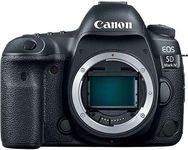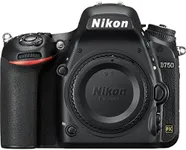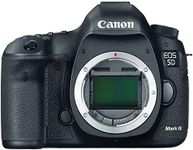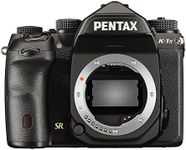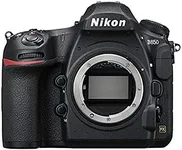Buying Guide for the Best Full Frame Dslr Cameras
Choosing the right full-frame DSLR camera can be a rewarding experience, especially if you understand the key specifications that matter most. Full-frame DSLRs are known for their larger sensors, which can provide better image quality, improved low-light performance, and greater depth of field control. To make an informed decision, it's important to consider your specific needs and how different specs align with them. Here are some key specifications to consider when selecting a full-frame DSLR camera.Sensor ResolutionSensor resolution, measured in megapixels (MP), determines the amount of detail a camera can capture. Higher resolution sensors can produce larger prints and allow for more cropping without losing image quality. If you plan to print large photos or need to crop images frequently, a higher resolution (30MP and above) might be beneficial. For general photography and sharing online, a resolution between 20MP and 30MP is usually sufficient.
ISO RangeThe ISO range indicates the camera's sensitivity to light. A wider ISO range allows for better performance in low-light conditions. If you often shoot in dim environments or at night, look for a camera with a high maximum ISO (e.g., 25,600 or higher). For typical daylight photography, a standard ISO range (e.g., 100-12,800) will suffice. Keep in mind that higher ISO settings can introduce noise, so a camera with good noise reduction capabilities is also important.
Autofocus SystemThe autofocus (AF) system determines how quickly and accurately the camera can focus on a subject. A more advanced AF system with more focus points and better tracking capabilities is crucial for action, sports, and wildlife photography. For portrait or landscape photography, a simpler AF system with fewer focus points may be adequate. Consider your shooting style and subjects when evaluating the AF system.
Frame RateFrame rate, measured in frames per second (fps), indicates how many images the camera can capture in a second. A higher frame rate is beneficial for capturing fast-moving subjects, such as in sports or wildlife photography. Cameras with frame rates of 8 fps or higher are ideal for these scenarios. For general photography, a frame rate of 5-7 fps is usually sufficient.
Build Quality and Weather SealingBuild quality and weather sealing are important for durability and protection against the elements. If you plan to shoot in challenging environments, such as rain, snow, or dusty conditions, look for a camera with robust build quality and weather sealing. For studio or casual photography, these features may be less critical, but they can still provide peace of mind.
Video CapabilitiesIf you plan to shoot video, consider the camera's video capabilities, such as resolution (e.g., 4K or Full HD), frame rates, and additional features like microphone input and image stabilization. For high-quality video production, a camera with 4K resolution and advanced video features is ideal. For occasional video recording, Full HD resolution and basic video features may be sufficient.
Battery LifeBattery life, measured in the number of shots per charge, is important for extended shooting sessions. If you often shoot for long periods or in remote locations, look for a camera with a longer battery life (e.g., 1000 shots or more per charge). For shorter sessions or casual use, a standard battery life (e.g., 500-800 shots per charge) should be adequate.
ConnectivityConnectivity options, such as Wi-Fi, Bluetooth, and GPS, can enhance your shooting experience by allowing for easy image transfer, remote control, and location tagging. If you frequently share images on social media or need to transfer files quickly, look for a camera with built-in Wi-Fi and Bluetooth. GPS can be useful for travel photography to keep track of where your photos were taken.
